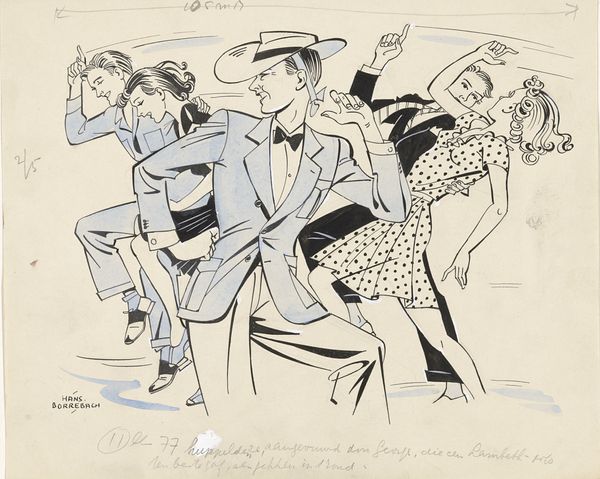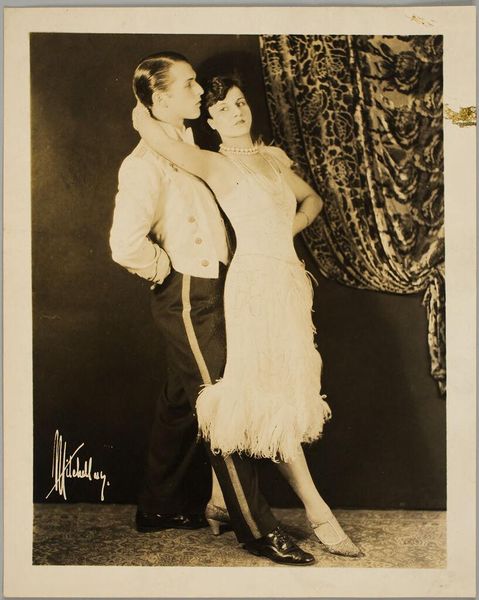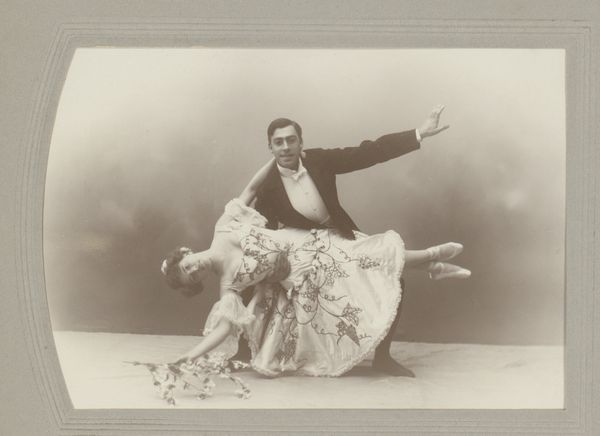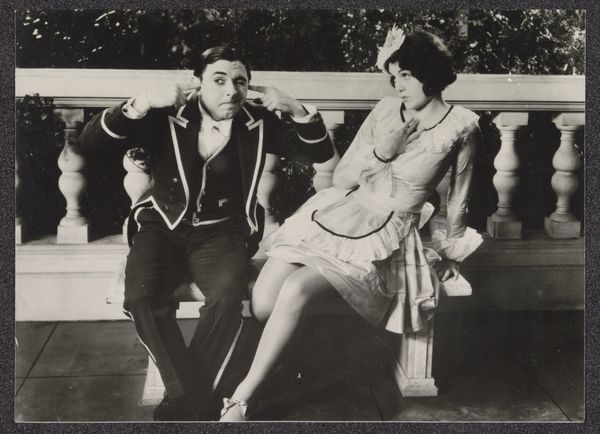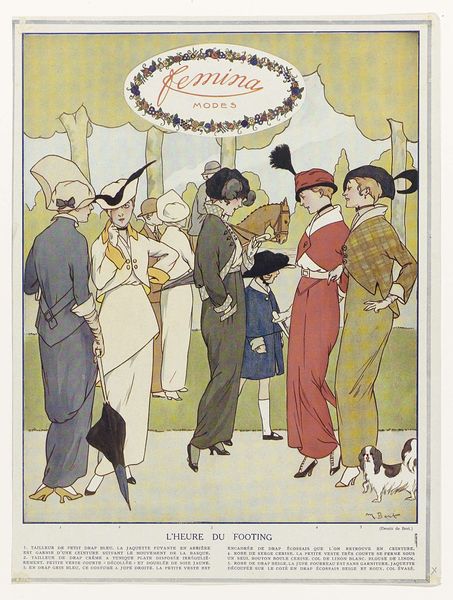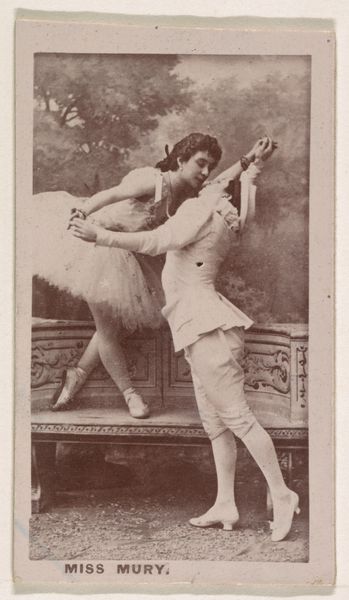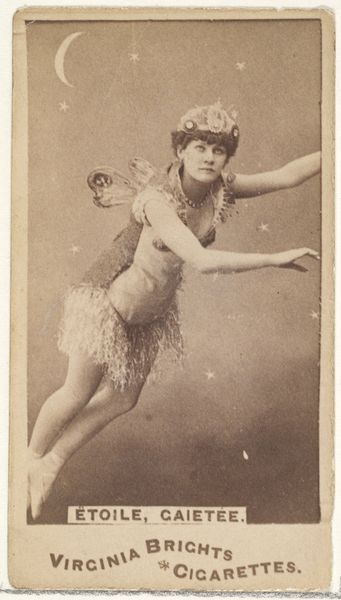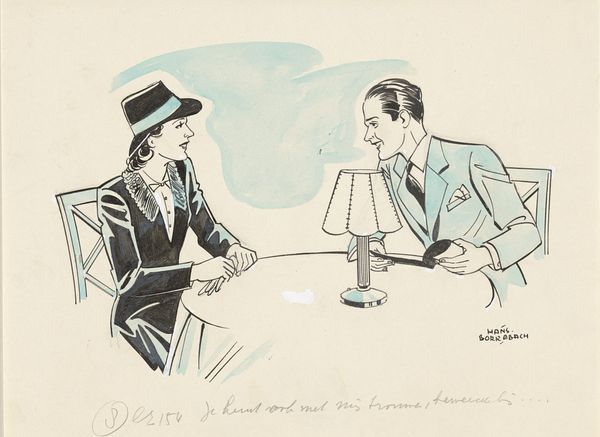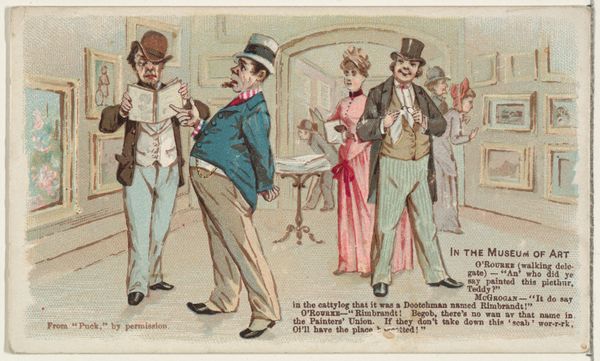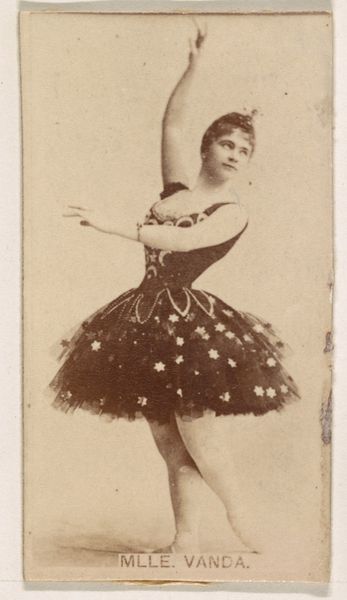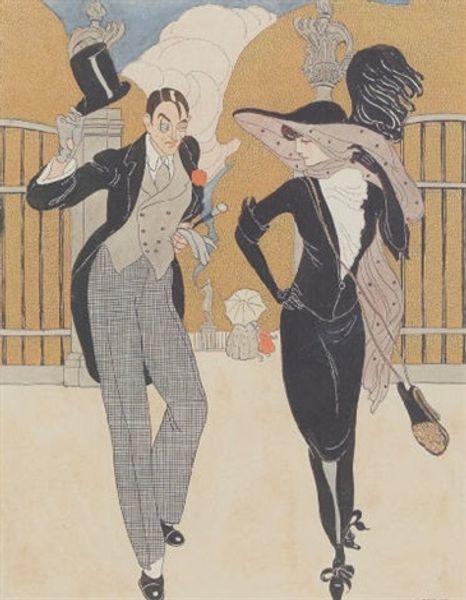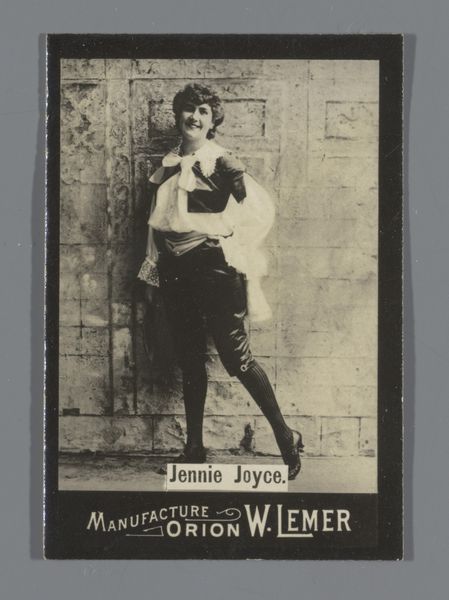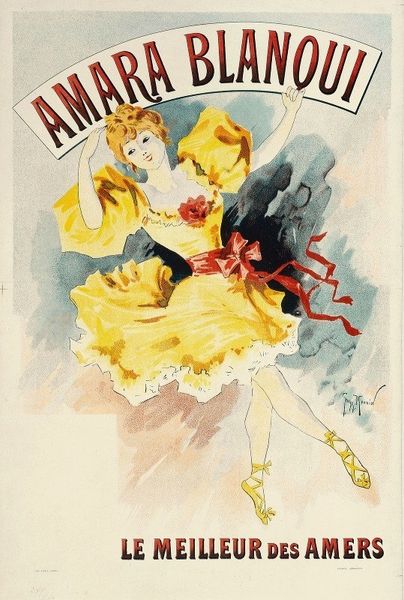
painting
#
portrait
#
painting
#
pop art
#
figuration
#
birthday themed promotional poster
#
men
#
watercolour illustration
#
genre-painting
#
academic-art
Copyright: Norman Rockwell,Fair Use
Curator: Here we have Norman Rockwell’s "Gaiety Dance Team" created in 1937. It captures a vaudeville couple perched on their trunk, and oh, they appear to be deep in thought! Editor: Indeed, there's a melancholy mood to it, isn’t there? Their downcast gazes and slumped shoulders… the heavy trunk between them acting almost as a physical barrier. Curator: Rockwell's style is often considered illustrative, drawing on commercial art. But there is significant social context to explore. Vaudeville was in decline by the late 1930s due to the rise of cinema, contributing to financial hardship and uncertain futures for many performers like Dolores and Eddie. This artwork touches on themes of precarity and the changing landscape of entertainment, wouldn’t you agree? Editor: Absolutely. Knowing that vaudeville was losing popularity adds so much weight to this piece. Their clothing, reminiscent of classic Hollywood glamour, becomes a costume worn for a profession that no longer holds the same cultural value. The poster tucked into the man's back pocket speaks to the hustle for gigs, a sort of sad advertising in waiting. Curator: Exactly, the small details speak volumes! I also think it is impossible not to note the implications about gender and performance embedded here. Consider the female dancer adorned with overtly feminine ornaments compared with the more formal costuming of the male figure; is she more vulnerable given the conditions of labor at the time? Editor: It makes you consider the performance of gender too. Their carefully curated appearance speaks to expectations on and off the stage, creating a deeper context around the pressures placed on individuals during times of significant economic change. And what do you think the body language reveals? They aren't even touching each other. Curator: The back-to-back seating conveys their strained relationship with each other and hints at deeper institutional struggles; both the individuals and the partnership are vulnerable. Is this Rockwell commenting on the personal and the economic hardships that vaudeville entertainers faced as their livelihood disappeared? Editor: Rockwell offers insight into how shifting public preferences had an impact on the daily existence and individual psyches within the entertainment business. Curator: Very well said, a reminder of art’s unique capacity to represent broader historical currents. Editor: And a potent invitation to analyze beyond the superficial charm frequently associated with Rockwell.
Comments
No comments
Be the first to comment and join the conversation on the ultimate creative platform.
